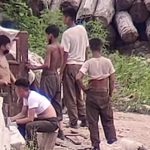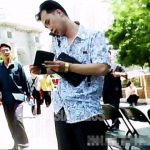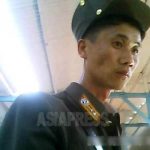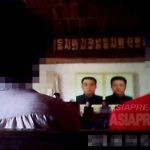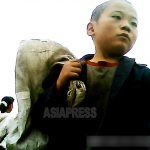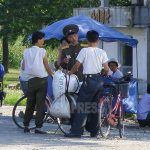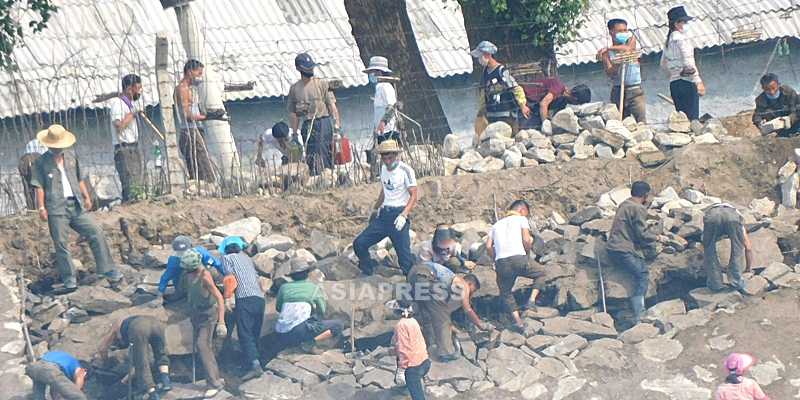
◆Introduction…A disaster unfolding
In the three years and nine months since the outbreak of the coronavirus pandemic in January 2020, many people have died in North Korea. When the border was closed for quarantine reasons, ASIAPRESS reporting partners in North Korea said that they were "more afraid of starvation than the pandemic" and that they had a premonition of disaster. Unfortunately, it became a reality.
The deaths were first caused by the collapse of North Korea's medical system. Trade was cut off, leading to a shortage of Chinese-made medicines, and the sick and injured, especially the elderly and infants, died without treatment. Then, as economic stagnation worsened the plight of urban residents, people began to die of malnutrition. There were also cases of people taking their own lives in despair over the future.
In May 2022, when the coronavirus pandemic hit the country, many people lost their lives, and for several months in the spring of 2023, the chaos in the provincial cities reached its peak; in some areas, there were even signs of famine. Chaos naturally breeds disorder. To combat this, the Kim regime resumed public executions in August 2023.
While not as bad as the social chaos of the late 1990s, known as the "Arduous March," the past few years have arguably been just as disastrous. Japan, South Korea, and the international community have been silent about this humanitarian crisis. I think it's because information is so scarce, and due to the "coronavirus pandemic," no one from the outside has been able to witness the disaster. Koreans in Japan who have relatives in North Korea and North Korean defectors living in Japan are becoming increasingly worried. They haven't heard from their relatives for almost four years.
As explained in more detail below, I have been working with people living in North Korea for more than 20 years to report on internal developments. The information I received from them is fragmentary, but by comparing and analyzing this accumulated information, I was able to see that the Kim Jong-un regime was using the pandemic as an excuse to impose unprecedented social control measures and a major policy shift to an "anti-market" regime. I could also see that these measures were a recipe for disaster. In this article, I will look back at the four years since the outbreak of the pandemic, focusing on the domestic situation in North Korea.

◆A growing “blind spot”
In January 2020, at the onset of the coronavirus pandemic in China, the Kim Jong-un regime sealed its borders, preventing people and goods from entering and leaving the country, and very few people traveled to China, crossed the border illegally, or defected (more on this below).
International media access to North Korea has also been cut off. Major news organizations and media, including Kyodo, AP, and AFP, which had bureaus in Pyongyang, were unable to send a single reporter into the country for four years. Even the Pyongyang correspondent for Chosun Sinbo, the official newspaper of Chongryon in Japan, withdrew in March 2020, and no replacement has been named as of January 2024.
The same goes for the Russian state news agency TASS (China's Xinhua declined to confirm this to us). It has been impossible to travel to China, which has imposed a strict zero-COVID policy, making it difficult to report from the DPRK-China border. Even international mail was stopped, and not a single postcard reached Japan. I don't think there has ever been such an information blackout regarding North Korea.


◆ Reporting partners inside North Korea
I began reporting on North Korea in 1993. I went to Pyongyang in 1995 and to North Hamgyong Province in 1997 and 1998, but I realized that there is a "high wall" that can never be jumped over by outsiders, no matter how much effort or money is spent.
In 2002, I decided to work with North Koreans to report on the internal situation. I traveled to China, met with North Koreans who had left the country both legally and illegally, and sought out reporting partners. The goal was to cultivate "citizen journalists. I used a Chinese cell phone to communicate with them. The signals can reach several kilometers inside North Korea. I had 10 reporting partners with varying levels of skill and motivation. But when the pandemic began, I lost contact with four of them. They live in Pyongyang and North Pyongan Province, and I lost the means to communicate with them because they are unable to travel to the border areas, let alone China. The other six live in Yanggang and North Hamgyung Provinces, and Pyongyang and I communicate by telephone or messenger.
In Japan, Yasunobu Shirouchi of the Tokyo Shimbun (who will retire at the end of 2023) and Koichi Yonemura of the Mainichi Shimbun are the only media outlets currently reporting on the situation in North Korea from independent sources, while overseas, several journalists from RFA (Radio Free Asia) have reported with their own sources. Unfortunately, South Korean media has all but abandoned independent reporting from inside North Korea.
ASIAPRESS reporters are all ordinary people, so we can't get high-level information. We don't know much about them except where they live. The research method is simple. All North Koreans are organized into local "people's units" and social groups such as workplaces and women's associations. There, in meetings and study sessions held every one to two weeks, policies and instructions from the Workers' Party or the government are passed on.
We also conduct weekly price surveys at markets and state-owned stores, and visit nearby cooperative farms to assess rural conditions. We ask our reporting partners to use their Chinese smartphones to take pictures of the documents they find so we can review them. But we are a small organization, and our research capacity is limited. With that in mind, we hope you will read the following report.
※ People’s units (or neighborhood watch units) are the lowest level administrative unit in North Korea and each consists of about 20 to 30 households, or about 60 to 100 members. The units are responsible for delivering instructions from the government and tracking the thinking and behavior of the population. ( To 2 >> )
- <Inside N. Korea> Government implements wage hike of more than 10 times (1) Wages increase for employees of state-run enterprises and government agencies
- <Investigation Inside N. Korea> How is the country’s fishing industry doing? (1) COVID and shrinking fishing grounds major problems…Kim regime’s restrictions on fishing lead some fishermen to financial collapse
- <Inside N. Korea>Speaking to a Border Guard (1) Landmine Burial at the Korea-China Border? “Even soldiers are afraid because they don’t know where they’re buried”
- <Inside N. Korea> A recent report on conditions at farms (1) The harvest is better than last year, but lack of materials remains a serious problem (4 recent photos)
- <Interview> How was the public execution in Hyesan carried out?…In just four months, three executions have occurred in the city… “We were lined up at our places of work and marched to the execution site”
